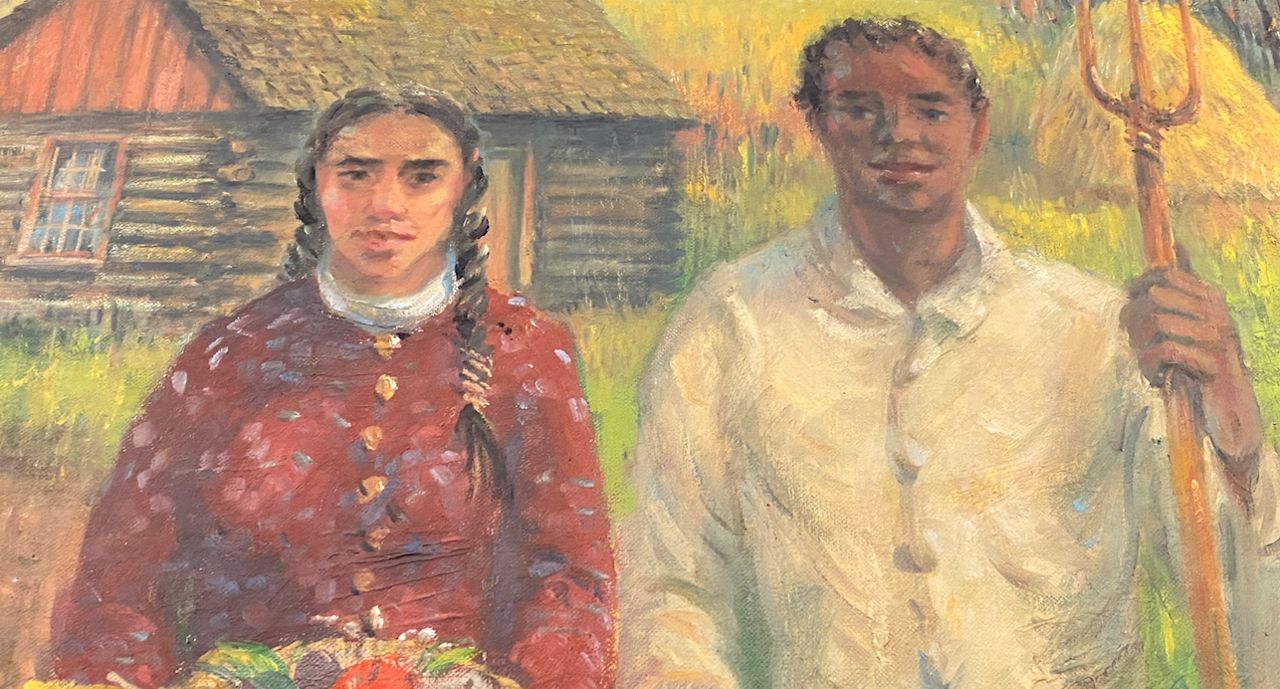FREEDOM, Wis. — The book on the Town of Freedom’s history could not be written without the presence of one mysterious man. Over the years, local historians have tried piecing together the story of James Jackson.
“He was very proud,” said Kenneth Vandenberg of the Freedom Area Historical Society. “And [he] loved to tell people how he was the first settler in the area, outside of the Oneidas.”
There’s no photograph of Jackson. Nearly a century after his death, a painting was created which is now located at the History Museum at the Castle in Appleton.
“We don’t know if that’s historically accurate. It’s just a representation of Jackson and what he symbolized for the area,” said Dustin Mack, Chief Curator of the museum.
According to the Freedom Historical Society, Jackson, a Black man from the south, settled just north of what is now The Town of Freedom around 1830.

“We know he was born prior to 1800. His name appears in census records in Virginia. He later stated that he was raised in the Nashville, Tennessee area but he didn’t know the exact town,” said Vandenberg.
Vandenberg believes Jackson was likely a slave.
“And he escaped slavery through the Underground Railroad and he ended up in Wisconsin,” said Vandenberg.
It’s believed that James Jackson made his way to Madison, then Oshkosh, to Neenah, then Shiocton where he married a woman from a native tribe.
“When he appeared in 1830, he did have a wife with him and he had a six-year-old daughter,” said Vandenberg. “Later on he would say that he had ten kids but all ten of them had died.”
Jackson’s original plot of land is near what is now The Colonial House Supper Club on Highway E. In 1852, the town council approached Jackson with the idea of naming their town after him, the first settler. Jackson had another idea.
“He asked them to name it Freedom because he said, this is where he found his freedom after escaping slavery,” said Vandenberg.
Jackson later left the town he named and moved to Appleton.
“He was a really respected settler from all accounts that I can find,” said Mack. “He was instrumental in creating a road that helped to bring lumber to help build Lawrence University.”
Jackson’s name appears in an Outagamie County Pioneer Association meeting from 1872.
“It marks him as the oldest settler, but then they also make the distinction that he was colored, which was the language of the time,” said Mack.
Jackson’s recognition came with an asterisk.
“And then they also marked a white settler as the oldest settler who was in attendance at the time,” said Mack as he points to Ephraim St. Louis of Little Chute. “And that’s the only other person here that’s marked as white. It’s just assumed that all of the other attendees at this meeting were in fact white.”
As a landowner, Jackson left behind clues to his past through land and census records. The man who named Freedom may have also named himself.
“Around 1872 he started calling himself General Andrew J. Jackson when his name was actually James Andrew Jackson. We’re not sure why he did that,” said Vandenberg.
“One theory is that Jackson maybe borrowed the name Andrew Jackson from President Andrew Jackson which would kind of explain the moniker of ‘general’ that went along with it,” said Mack.
Another theory may be that James Jackson actually served under Andrew Jackson in some capacity, thereby eventually earning his freedom and eventually adopted his name. Some documents point to James Jackson as having a veteran status but nothing seems definitive.
There’s also the possibility Jackson being called “General” was a sign of embedded racism of the time.
“Whether or not that was something that he wanted and appreciated and was a symbol of respect or if it was “General” Jackson, kind of tongue and cheek and meant to be kind of denigrating,” said Mack.
Mack and historians call this reading against the grain.

“Appleton Crescent in 1874, that’s talking about his wife burning down their house and that she was ultimately judged insane….well at least that’s the implication here,” said Mack. “Whether or not that’s actually true…you have to determine if that’s a product of the time and just kind of the racism that existed and was accepted in American society at the time or if it’s defining what her actions were or what his actions were.”
Historians continue to piece together the life of James Jackson and attempt to discern fact from folklore. Several newspapers announced Jackson’s death in 1879. Papers of the time suggest Jackson lived to almost 100 years old.
He believed to be buried in Pioneer Cemetery in Grand Chute just north of Appleton. His grave, like many there, is unmarked. No headstone for the man who named Freedom but left a lasting mark in many other ways.



